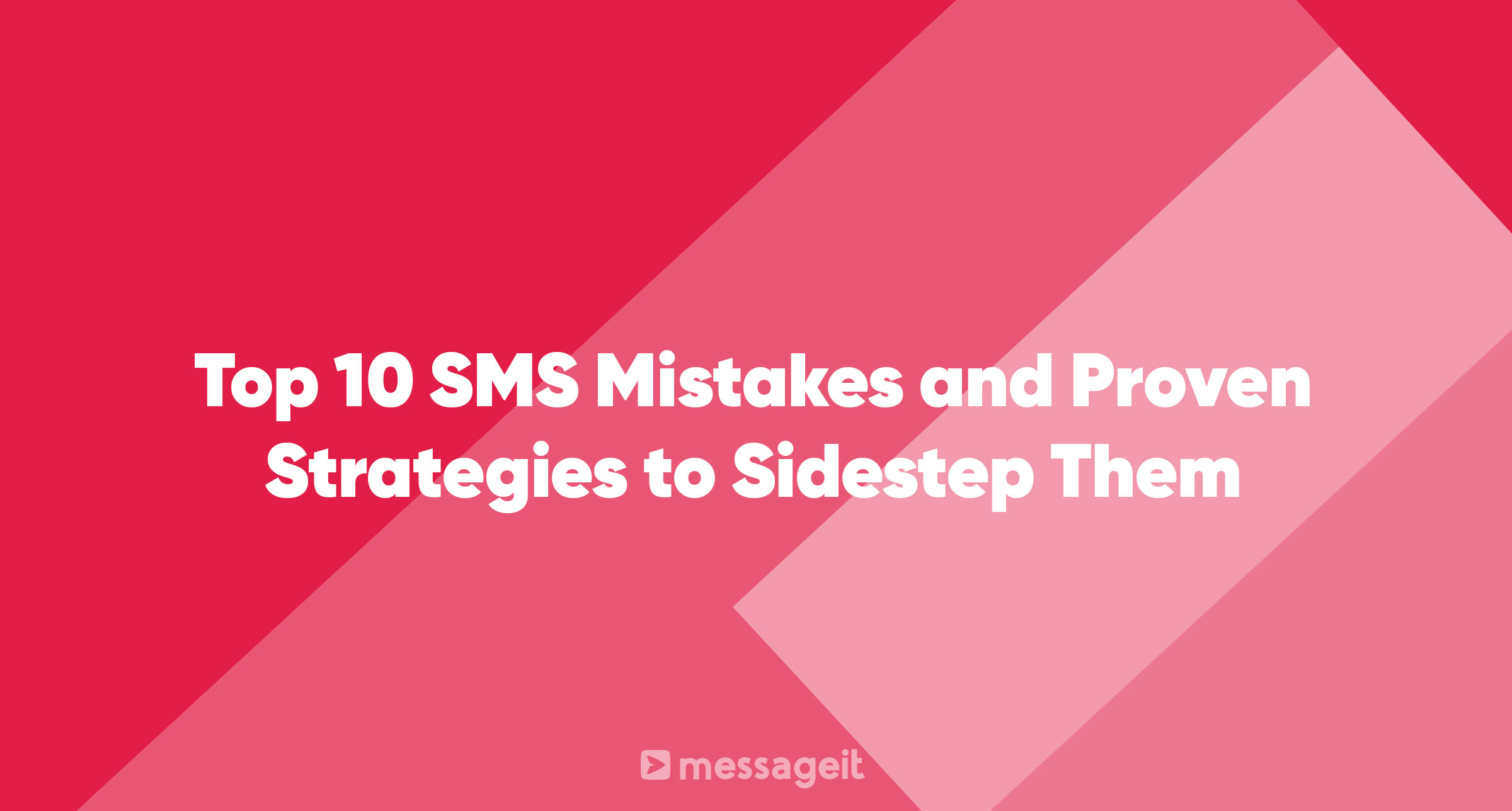SMS marketing is a potent tool in the arsenal of modern businesses. However, like any powerful tool, it can also be a double-edged sword if not used correctly. One of the main challenges lies in avoiding common SMS mistakes that can harm your company's reputation and alienate your customers.
To assist you in evading these pitfalls, we'll dive deep into the ten most common SMS mistakes and offer proven strategies to sidestep them. So, let's dive in!
1. Avoid Uninvited SMS Messages
Perhaps the most severe mistake a company can make is to send unsolicited text messages. Bombarding your customers with promotional texts they didn't sign up for can lead to frustration, resentment, and potential legal consequences.
Solution: Opt-In Forms
The most effective way to avoid this pitfall is to ensure your customers have given their explicit consent to receive your text messages. This can be accomplished through opt-in forms or by prompting customers to text a specific keyword to a dedicated mobile shortcode.
"Text JOIN to 12345 to sign up for our promotional messages and receive a 10% discount on your next purchase!"
This approach respects your customers' choice and control over the marketing messages they wish to receive, laying the foundation for a positive and transparent relationship.
2. Avoid Ineffective Timing and Excessive Messaging
Timing plays a crucial role in SMS marketing. Sending too many messages or texting at inappropriate hours can be intrusive and annoying.
Solution: Respect Time Zones and Set Message Limits
To avoid this, be mindful of your customers' time zones and establish a logical limit to the number of messages sent per week. As a general rule, aim to text your customers only once or twice a week, and avoid sending messages before 9 AM or after 9 PM.
3. Avoid Using Email and SMS Interchangeably
Another common pitfall is using the same message for both email and SMS. Each channel has its unique strengths and limitations, and it's crucial to tailor your message to the channel you're using.
Solution: Use SMS for Time-Sensitive, Urgent Messages
SMS, with its 160-character limit, is perfect for short, urgent communications. Email, on the other hand, is ideal for longer messages that include images, links, and attachments. By understanding the strengths of each channel, you can use them complementarily to enhance your marketing efforts.
4. Avoid Sending Messages to Invalid Numbers
Sending messages to invalid numbers is the most common reason for SMS delivery issues. This not only leads to wasted efforts but also decreases your message deliverability score.
Solution: Grow Your Sending List Organically
To avoid this issue, grow your sending list organically. Encourage your customers to subscribe to your SMS list by offering exclusive discounts or valuable information. You can also use a reliable API equipped with phone number lookup to ensure the numbers on your list can receive SMS messages.
5. Avoid Ignoring Future Communication
Once you've gained a new subscriber, it's essential to lay the groundwork for future communication. Failing to inform your customers about how and when you'll be in touch can lead to misunderstandings and increased unsubscribe rates.
Solution: Send a Welcome Text Outlining Your Terms
Sending a welcome text after subscription, explaining your communication frequency and the types of information you'll be sending, helps set clear expectations. This transparency helps build trust and fosters a positive relationship between your brand and your customers.
6. Avoid Long, Spammy Messages
SMS is designed to be short and sweet. However, some businesses make the mistake of sending long, spammy texts which can get broken up during delivery, distorting the intended message.
Solution: Be Concise and Personal
When crafting your SMS messages, strive for brevity and a personal touch. Use your customer's name, be clear with your information, and even add a dash of humor to build a memorable brand personality.
7. Avoid Missing a Clear Call-To-Action
A common mistake in SMS marketing is the absence of a clear call-to-action (CTA). CTAs are crucial in prompting your customers to complete a specific task, such as subscribing to a mailing list, entering a contest, or participating in a sale.
Solution: Include a Single, Clear CTA
Your CTA should be clear, concise, and easy to accomplish. Consider using specific keywords to make your CTA easy to recognize and execute.
8. Avoid Sending Too Many Messages
Overloading your customers with promotional texts can lead to irritation and damage your brand reputation.
Solution: Limit Your Messages to Once or Twice Per Week
Less is more when it comes to SMS. Ensure you are sending messages that are relevant and require urgent action. As a best practice, limit your text messages to once or twice a week.
9. Avoid Sole Dependence on One Channel
Some businesses make the mistake of replacing email marketing entirely with SMS, or vice versa. This approach can result in missed opportunities and a disjointed customer experience.
Solution: Use SMS to Complement Your Email Marketing
Use both channels to their strengths. For example, send a detailed promotional email, and follow up with an SMS to highlight the urgency of the offer.
10. Avoid Ignoring Your Customers' Preferences
The final pitfall to avoid is neglecting your customers' preferences. Customers appreciate personalized messages that are directly beneficial to them.
Solution: Send Relevant and Valuable Information
Before sending a message, consider if the information is valuable to your customers. Personalizing your messages according to your customers' preferences and interests can help foster a positive relationship and enhance brand loyalty.
In conclusion, while SMS marketing presents numerous opportunities, it's crucial to avoid these common SMS mistakes to ensure a successful marketing campaign. By following these proven strategies, you can leverage SMS marketing to its full potential and foster a strong relationship with your customers.
